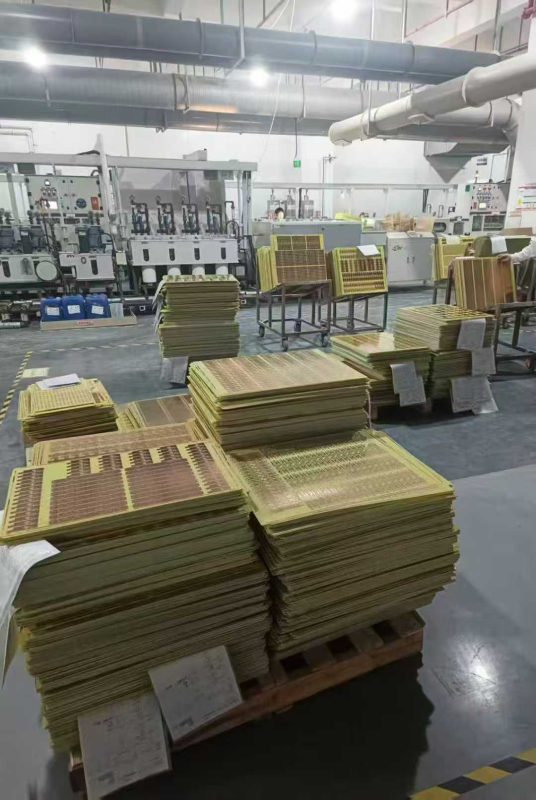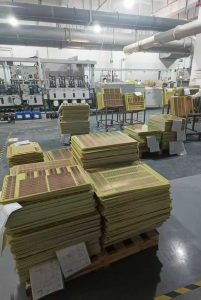 Well-known PCB supplier
Well-known PCB supplier
+86 13603063656

Introduction
In today’s fast-paced electronics industry, fast PCB prototyping is crucial for rapid product development. A reliable fast PCB prototyping service ensures that designs move quickly from concept to testing, helping businesses stay ahead of the competition. In this article, we will explore the significance of fast PCB prototyping, how it works, and the benefits it offers to companies looking for quick and cost-effective solutions. We’ll dive into everything from the prototyping process to choosing the right service provider. Let’s explore why investing in a fast PCB prototyping service is essential for your next project. Jefico is your reliable Fast PCB Prototyping Service supplier, and for easypcb, it will be more quick

Reliable Fast PCB Prototyping Service
Fast PCB prototyping is the process of creating a functional prototype of a printed circuit board in a shorter amount of time than traditional methods. This rapid approach enables engineers to quickly test their designs, identify potential issues, and make necessary adjustments before mass production.
Typically, a fast PCB prototyping service uses advanced fabrication technologies that allow for faster turnarounds while maintaining high-quality standards. These services are particularly useful in industries where time-to-market is crucial, such as consumer electronics, automotive, and medical devices.
The basic process involves turning the PCB design files into physical boards using automated machines. The service often includes testing and validating the design before full-scale production begins. With fast PCB prototyping, companies can avoid the costly mistakes that often arise from traditional production timelines.
What’s the real story here? The real benefit of fast PCB prototyping lies in the ability to quickly iterate designs without waiting for months to receive finished boards. This can dramatically reduce the time it takes to get a product to market.
Table 1: PCB Prototyping Process Overview
| Step | Description | Duration |
|---|---|---|
| Design | Initial schematic and PCB layout design | 1-2 days |
| Fabrication | Manufacturing the physical PCB | 1-5 days |
| Testing | Validation of electrical and functional performance | 1-2 days |
| Revisions | Adjustments based on testing | 1-3 days |
When speed is of the essence, the advantages of fast PCB prototyping cannot be overstated. First, the primary benefit is the reduction in time-to-market. Fast prototyping enables companies to test their product designs, identify any issues early on, and make necessary revisions—often much quicker than the traditional process.
Furthermore, fast PCB prototyping services allow for smaller batch production. This is particularly valuable for companies that are experimenting with new designs but don’t need large-scale production runs right away. By using a rapid prototyping service, you can keep costs low and scale up only once the design has been validated.
Another advantage is flexibility. With fast prototyping, engineers and designers can test multiple variations of a design, experiment with different materials, or modify circuit layouts without the constraints of long lead times. This leads to better innovation and the ability to push the boundaries of product design.
But here’s the kicker: the speed of prototyping is also linked to cost savings. Fast PCB prototyping helps avoid costly delays and ensures that the final product will meet market demands without unnecessary expenditure on flawed prototypes.
Table 2: Benefits of Fast PCB Prototyping
| Advantage | Description |
|---|---|
| Reduced Time-to-Market | Quicker design iteration cycles lead to faster product launch. |
| Cost Efficiency | Smaller batch sizes reduce upfront production costs. |
| Flexibility | Multiple design variations can be tested quickly. |
Despite the advantages, fast PCB prototyping is not without its challenges. One of the main hurdles is the potential for design errors that can affect the entire production timeline. These errors, if not identified early, can lead to delays in testing, manufacturing, and delivery.
Material limitations are another concern. While fast PCB prototyping services offer a range of materials, they may not always be suitable for more complex designs. This is particularly true when working with advanced materials like flexible PCBs or multi-layer boards.
Finally, there is the issue of balancing speed and quality. While it’s tempting to speed up the process, cutting corners on quality can lead to prototypes that fail to meet the required performance standards. To avoid this, it’s essential to work with experienced prototyping providers who can deliver both speed and quality.
This is where it gets interesting: these challenges highlight the importance of choosing the right fast PCB prototyping service. By selecting a provider with robust quality control measures, you can ensure that the prototypes meet the necessary standards despite the speed of production.
| Challenge | Description |
|---|---|
| Design Errors | Mistakes made in the design phase that can delay prototyping. |
| Material Limitations | Some advanced materials may not be available for rapid prototyping. |
| Quality Control | Balancing speed with the need for high-quality prototypes. |
Choosing the right fast PCB prototyping service can make or break your project. There are several factors to consider when selecting a provider, including reliability, experience, and turnaround time.
First, assess the provider’s track record in delivering high-quality prototypes on time. Check if they have experience in your industry and are familiar with the type of PCBs you need, whether it’s a single-layer, multi-layer, or flexible PCB.
Second, make sure that the provider offers clear communication throughout the process. You need a partner who can quickly adapt to changes in your design and keep you informed of progress every step of the way.
Ready for the good part? A fast PCB prototyping service should also offer flexibility in terms of revisions and iterative designs. The ability to make adjustments mid-process can save you significant time and money in the long run.
| Factor | Importance |
|---|---|
| Reliability | Ensures prototypes are delivered on time and meet specifications. |
| Industry Experience | Knowledge of your specific PCB needs is crucial. |
| Communication | Transparent updates and responsiveness to changes. |
| Flexibility | Ability to make revisions and accommodate changes quickly. |
Several technologies have revolutionized the speed of PCB prototyping. Advanced CNC machines and laser cutters allow for precise and quick production of prototypes. In addition, automated assembly lines ensure that complex designs can be assembled with minimal human intervention, speeding up the process significantly.
The use of rapid curing materials is another game-changer. These materials allow for faster curing times without sacrificing the strength or reliability of the PCB. Innovations like these have made it possible to produce high-quality prototypes in a fraction of the time it would have taken with traditional methods.
What’s the real story? These technological advancements make it possible to deliver prototypes faster, even for complex designs. As technology continues to evolve, the future of PCB prototyping looks even more promising, with innovations paving the way for even faster production times.
| Technology | Description |
|---|---|
| CNC Machines | Automated machines for precision manufacturing. |
| Laser Cutters | Cutting-edge technology for rapid, accurate cuts. |
| Rapid Curing Materials | Faster curing times for quicker prototyping. |
To further speed up the PCB prototyping process, there are several strategies you can employ. The first is optimizing your design files. Ensuring that your PCB design is clear and free of errors can significantly reduce delays in the prototyping phase.
Another method is to work with experienced PCB designers who are familiar with the manufacturing process. These professionals can help you avoid common mistakes that can slow down the prototyping process.
This is where it gets interesting: selecting the right PCB prototyping service that offers a quick turnaround time while maintaining high standards is key to speeding up the process. With the right service, you can achieve faster results without compromising on quality.
In conclusion, fast PCB prototyping is an invaluable service for companies looking to accelerate product development and reduce time-to-market. By understanding the process, challenges, and benefits, businesses can make informed decisions when selecting a service provider. Whether it’s for reducing costs, speeding up design iterations, or ensuring quality, fast PCB prototyping offers solutions to meet today’s competitive demands.
Q1: What is fast PCB prototyping?
Fast PCB prototyping is a rapid process that allows engineers to quickly create a physical model of a printed circuit board, helping them test and refine designs before mass production.
Q2: How does fast PCB prototyping work?
Fast PCB prototyping involves advanced fabrication methods that enable quick design-to-production cycles, often using automated machinery and rapid-curing materials.
Q3: What are the main benefits of fast PCB prototyping?
The benefits include reduced time-to-market, cost efficiency through smaller production runs, and the ability to quickly iterate designs for improved product performance.
Q4: How can I choose the right fast PCB prototyping service?
Look for a provider with a track record of reliability, industry experience, and the ability to offer flexible and clear communication throughout the prototyping process.
Q5: What materials are typically used in fast PCB prototyping?
Common materials include FR4, copper, aluminum, and flexible materials like polyimide, depending on the complexity of the design.
Connect to a Jerico Multilayer PCB engineer to support your project!
Request A Quote